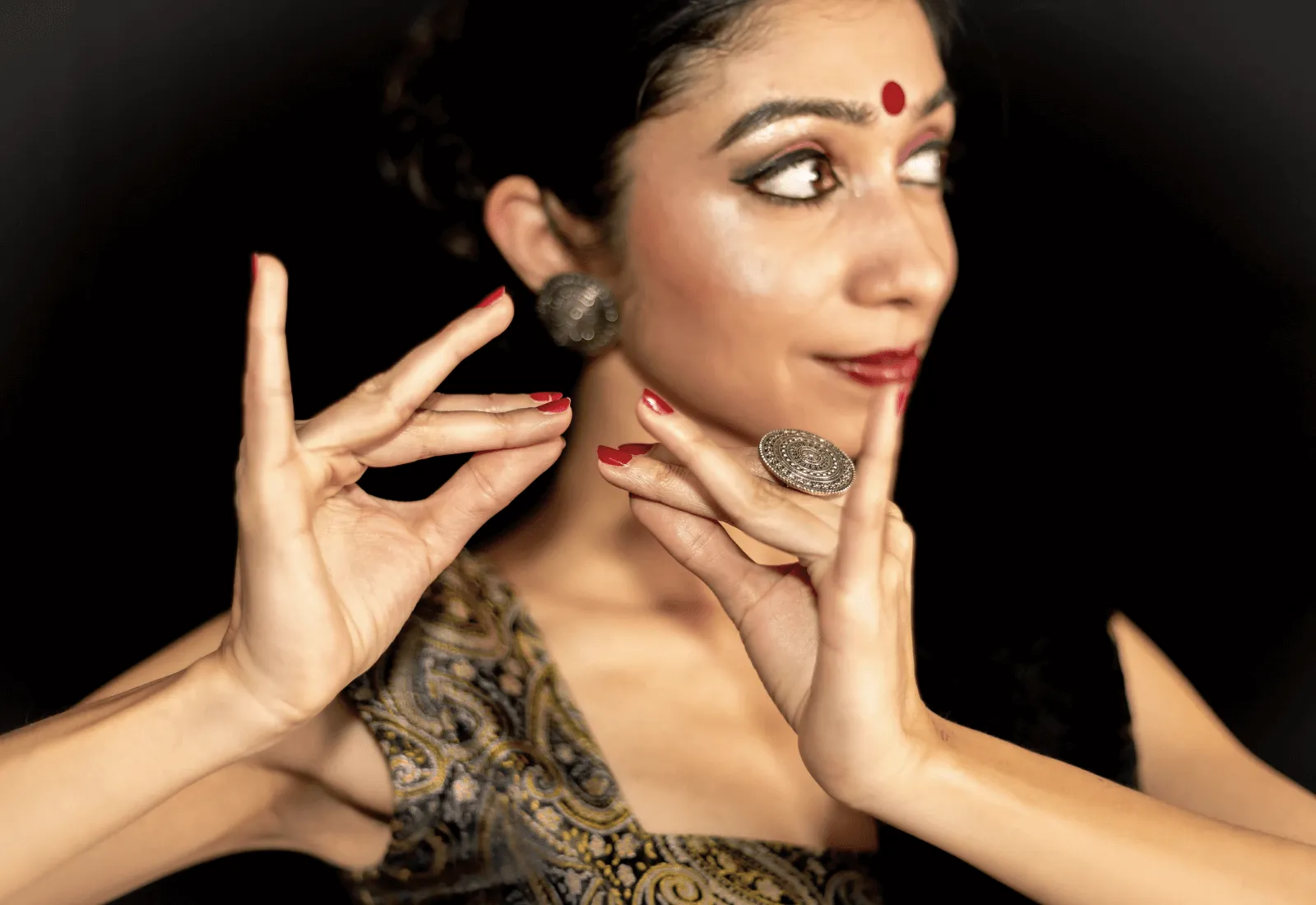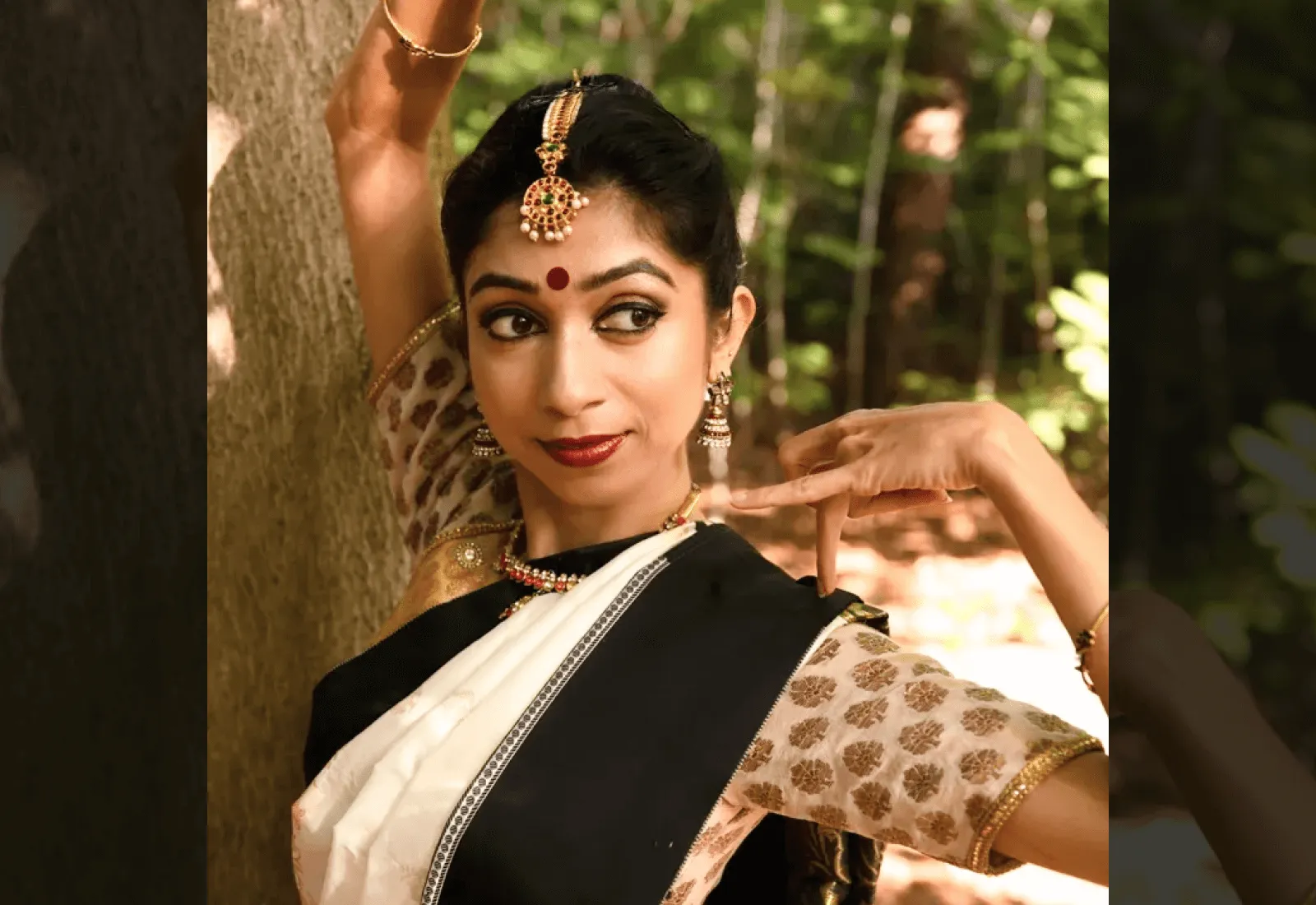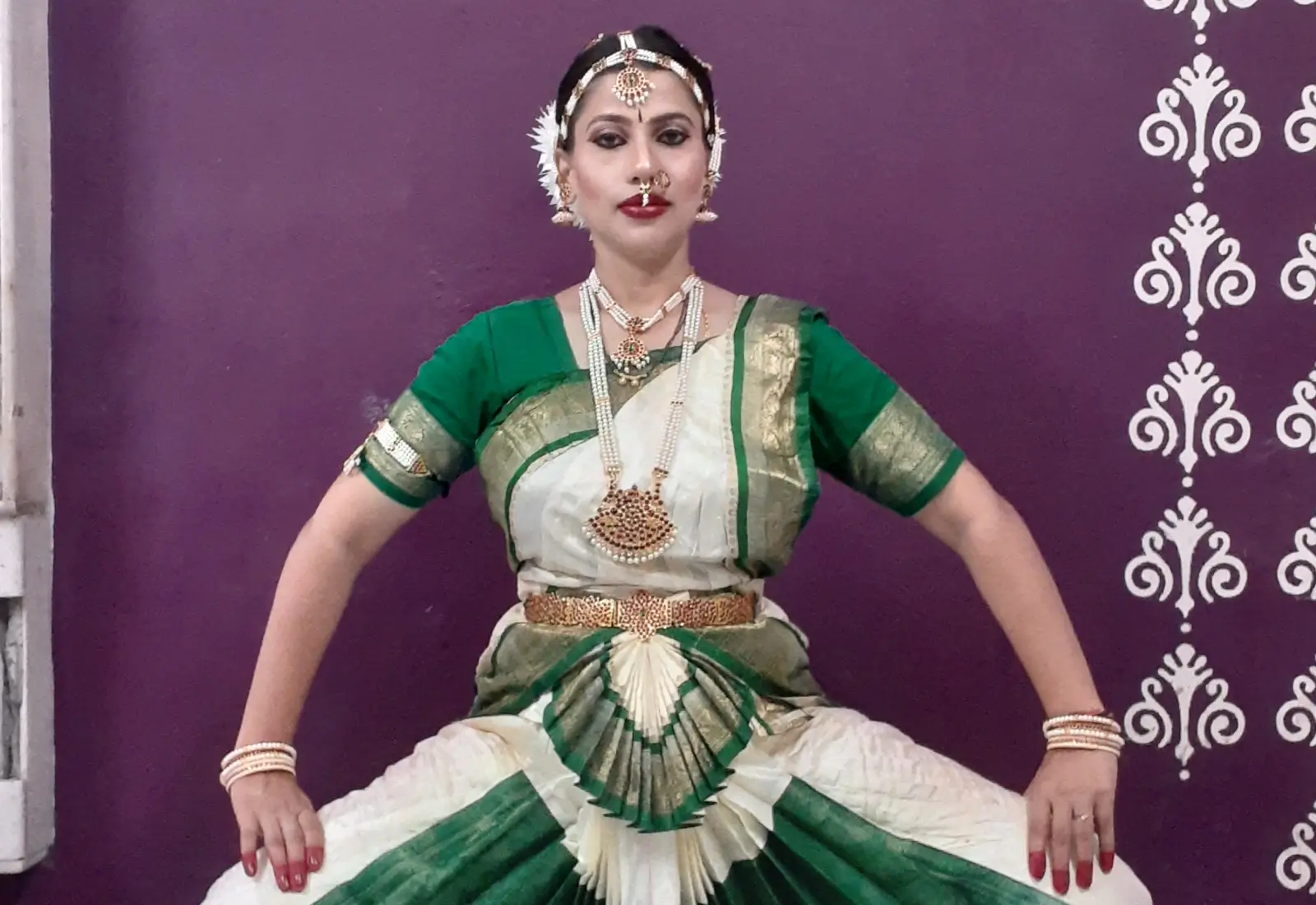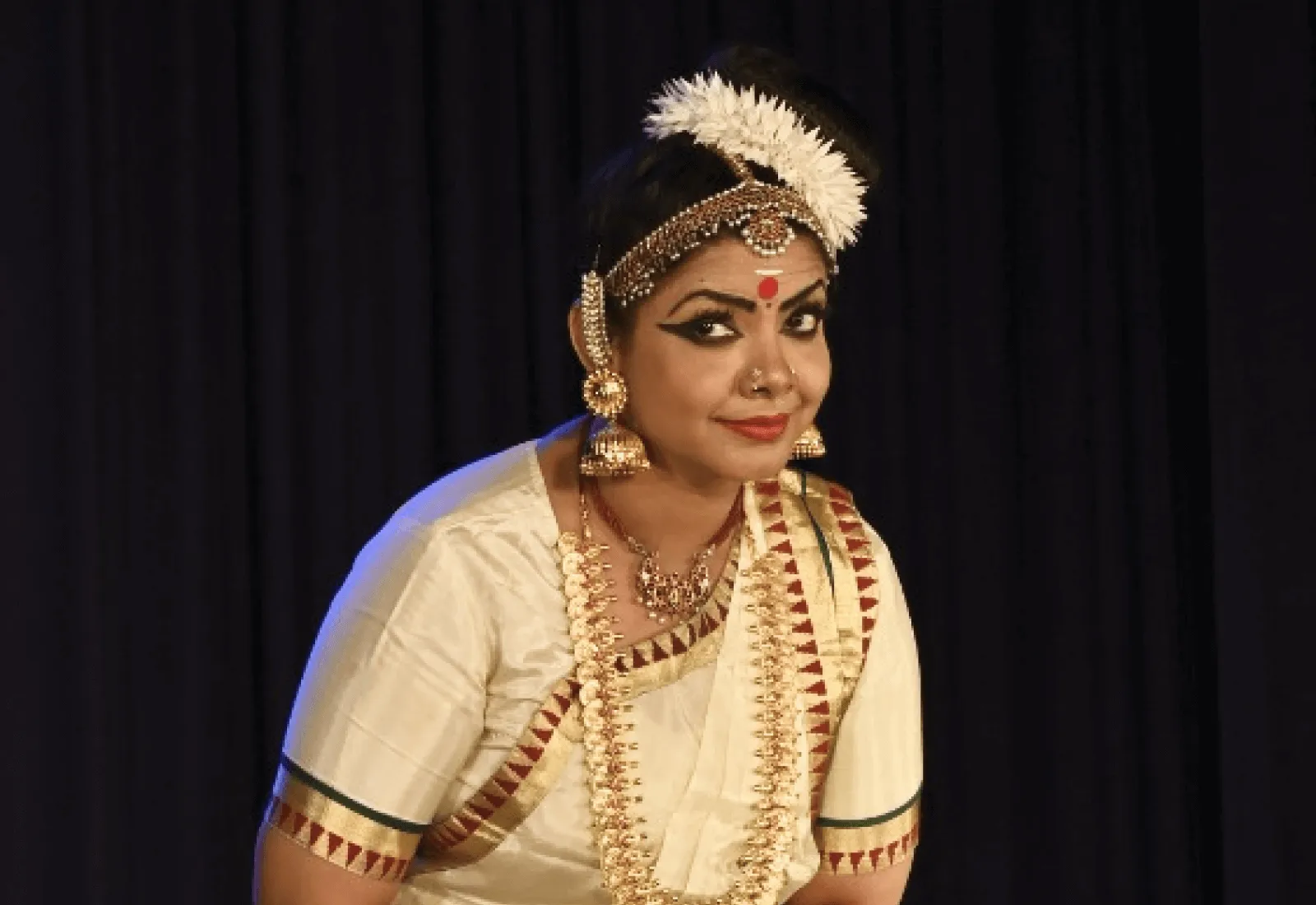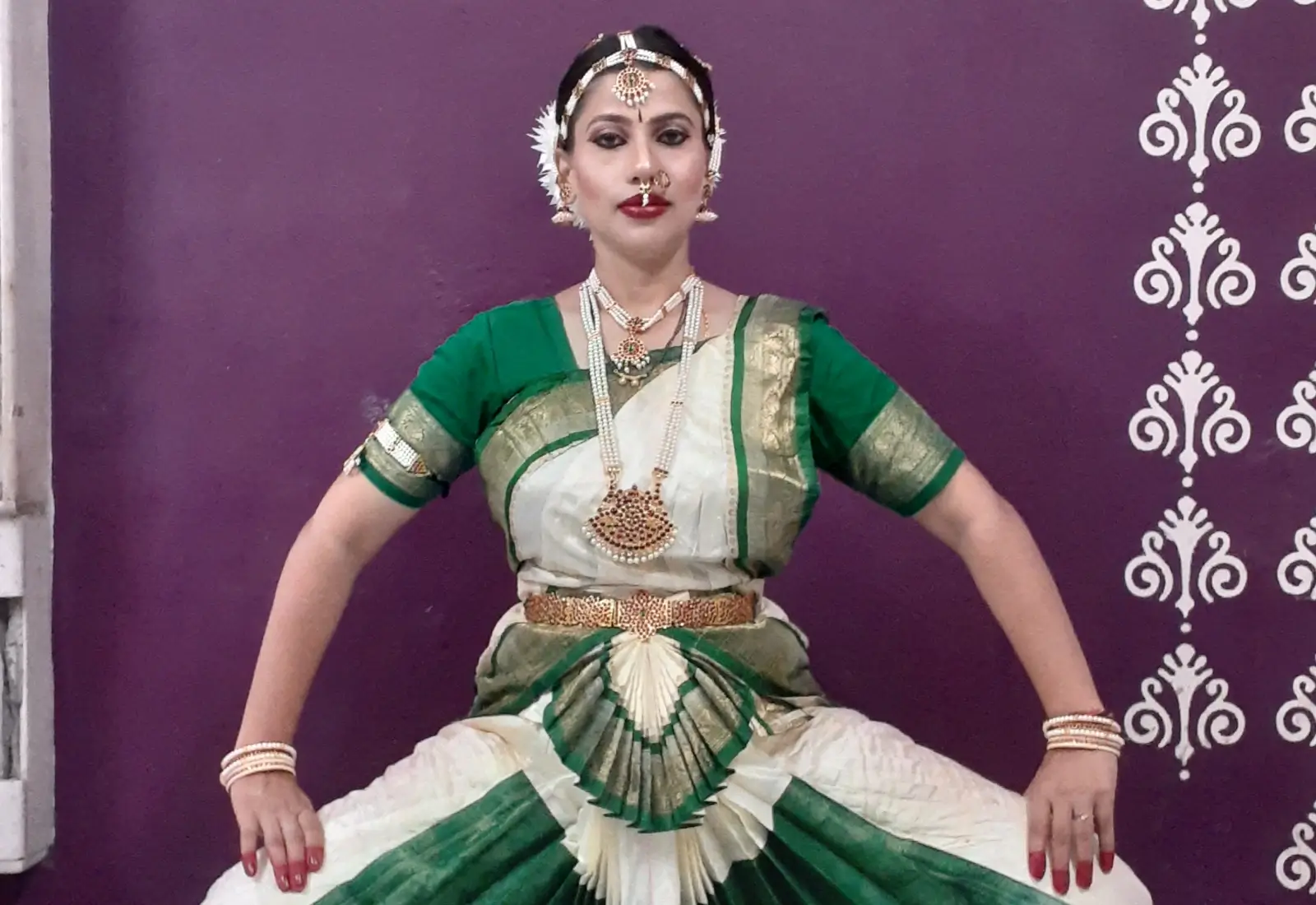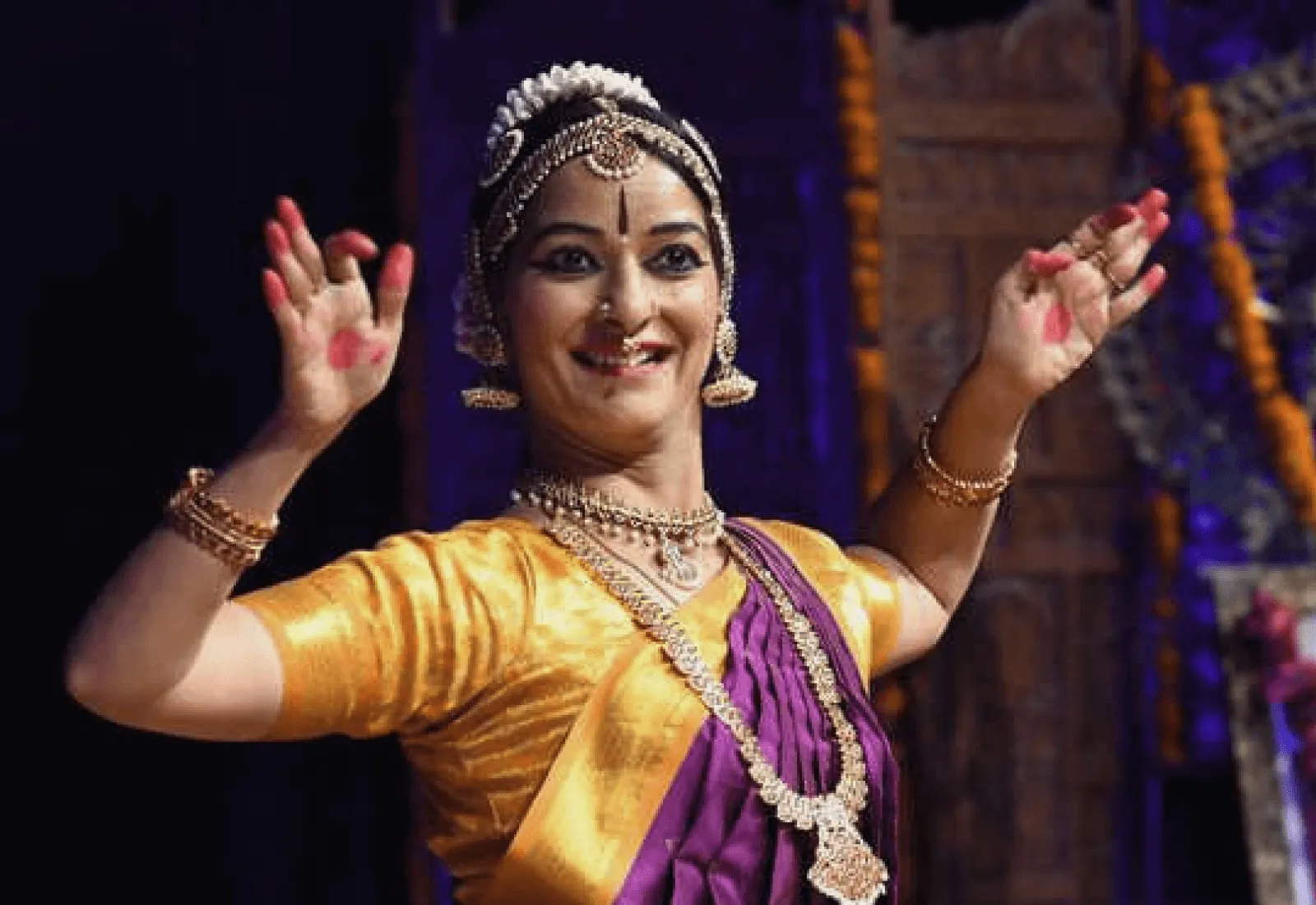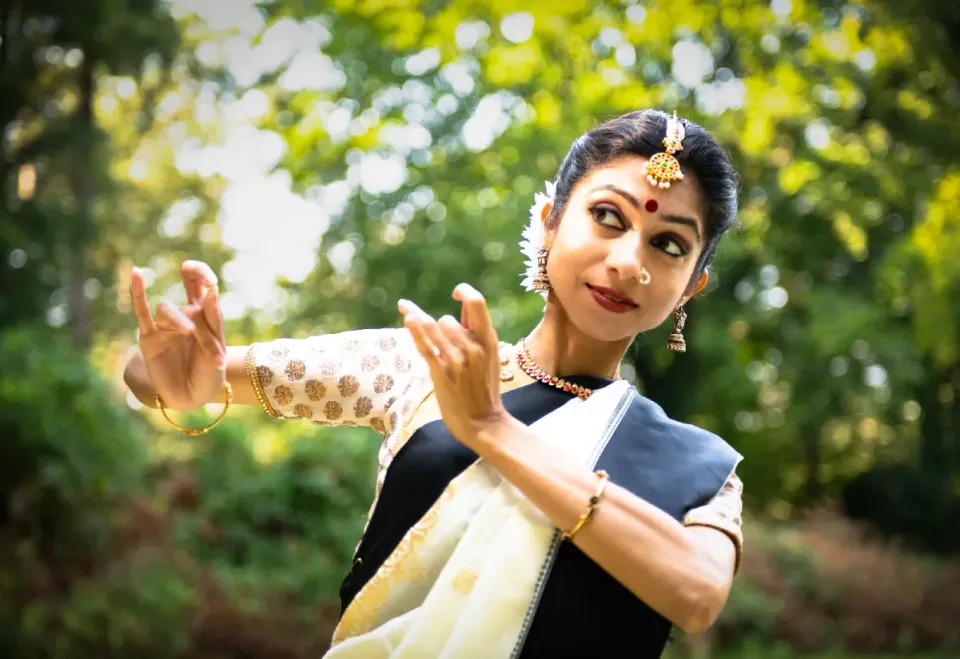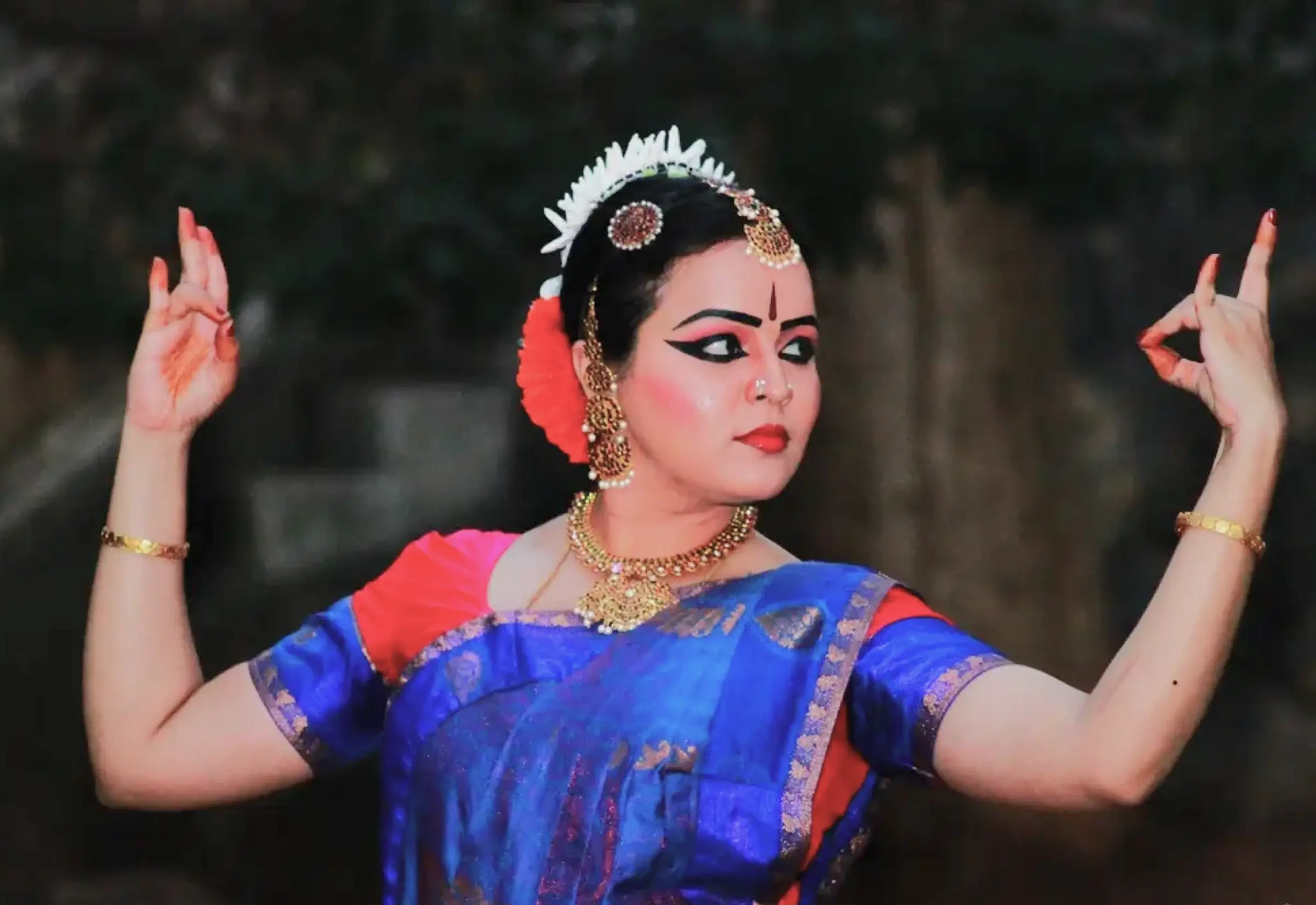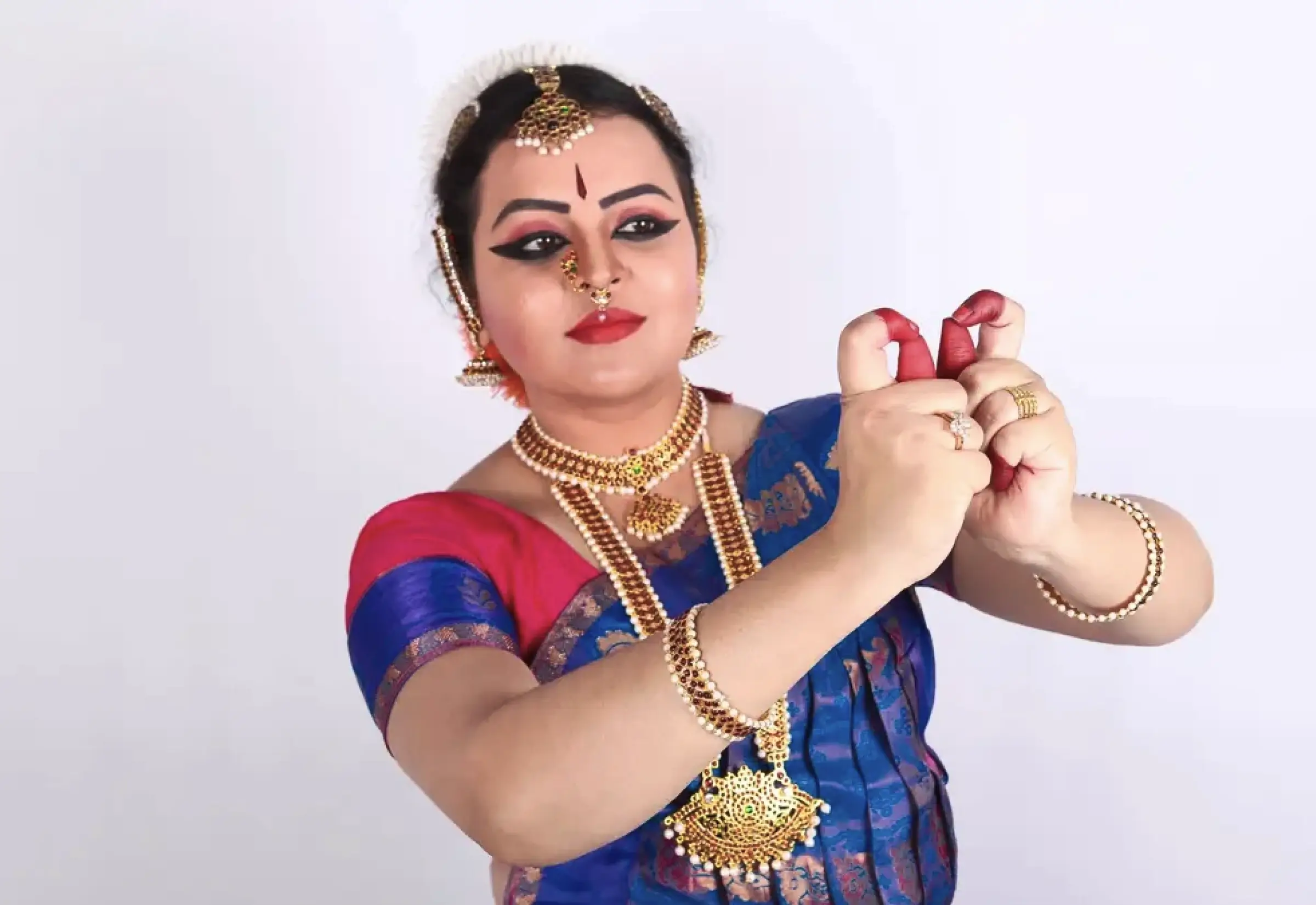5 Best Bharatanatyam Postures You Must Know
One of the most expressive and graceful dance forms, Bharatanatyam has countless postures and gestures. You will be awed by the geometricity and preciseness of Bharatanatyam postures. Irrespective of their exactitude, when a skilled performer brings them into execution, they appear elegant, smooth, and intense. And what adds to the intensity and gives power to these postures, are the expressions of the performer.
A Bharatanatyam performance is a beautiful blend of Nritta (rhythmic elements), Nritya (combination of rhythm with expression), and Natya (dramatic element). A Bharatanatyam posture forms one of the elements of the Nritta aspect.
The Divine Element of Bharatanatyam
All the elements, the Nritta, Nritya, and the Natya find their mention in the following Shloka, dedicated to Lord Shiva, who is the embodiment of grace, emotions, and power!
“Aangikam Bhuvanam Yasya
Vachikam Sarva Vaanmayam
Ahaaryam Chandra Taaradi
Tam Vande Sattwikam Shivam”
This shloka is recited by all Bharatanatyam practitioners and performers throughout their learning journey, with the aim of understanding and feeling the divine nature of this art form.
It means, ‘We bow to Him the benevolent One, whose limbs are the world, whose song and poetry are the essence of all language, Whose costume is the moon and the stars.’
Check out these 5 top Bharatanatyam postures:
1. Samapadam
2. Araimandi
3. Muzhumandi
4. Prenkhana
5. Eka Pada
Let's read about them in detail.
1. Samapadam
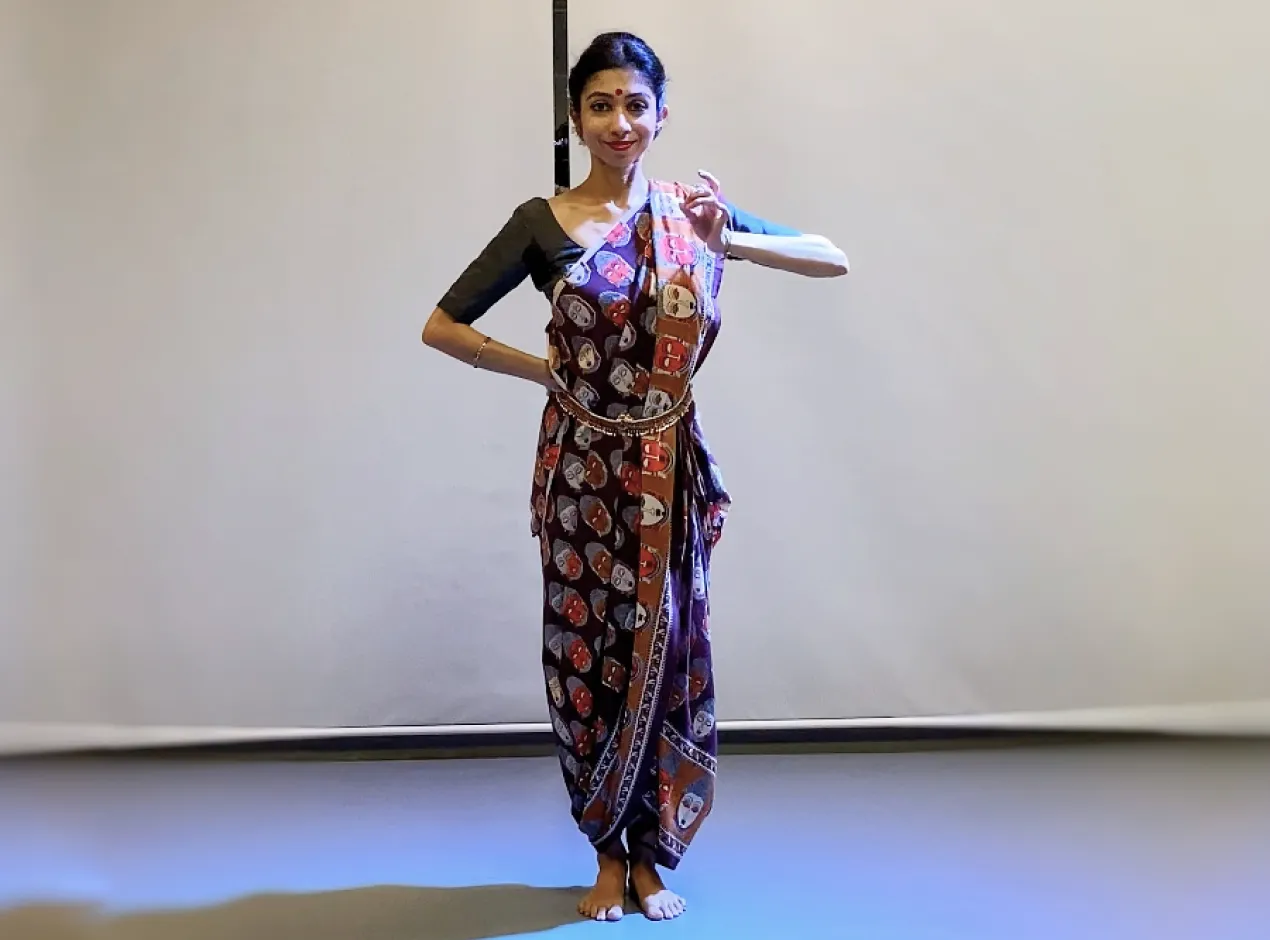
Samapadam is the basic and simplest posture in Bharatanatyam. It is a static posture which means the body is stationary or motionless once the posture is attained.
Following are the technical aspects of this posture.
The perfect alignment of the hands comes when you place both hands with the thumbs-up position at both sides of your waist in the Ardha Chandra Hasta or the Half Moon style.
The upper portion and the lower portion of the body are aligned in a way that the body frame neither looks very firm nor very relaxed. The chin is slightly bent (approximately an inch down) and the eyes face the front.
Both feet are placed together without any space.
2. Araimandi
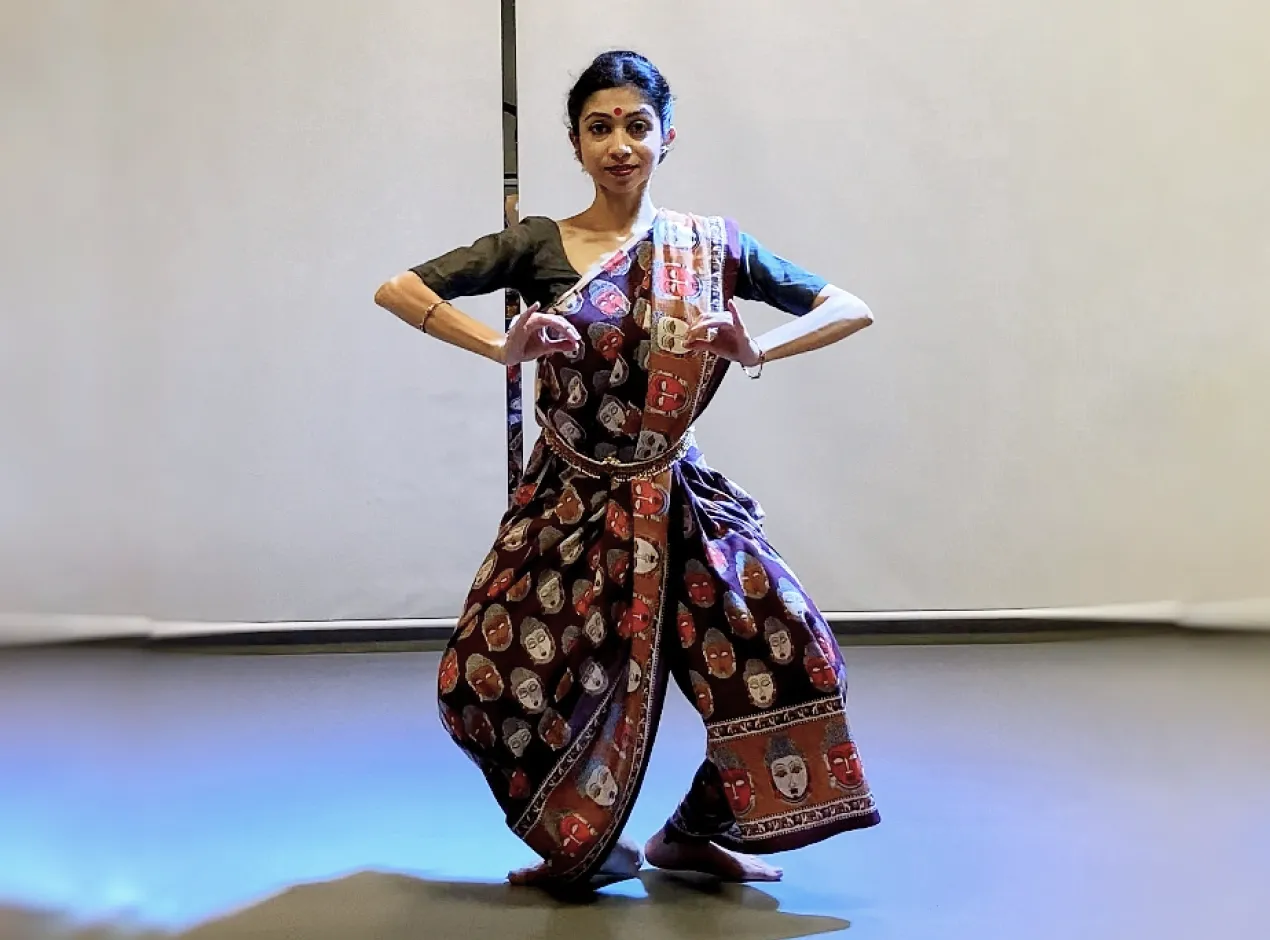
With the hand position remaining the same as in the Samapadam, the posture begins by moving the feet apart with toes in the outward direction and the heels must be at a distance of a minimum of three fingers apart. The body weight must fall equally on the feet so that a balance is maintained.
The knees are bent pointing outwards, in the half-seated position, in such a way that the toes and the knees are aligned. While in the posture, one must not hunch forward.
Since the posture requires a lot of strength learners must enhance their core muscles and improve their flexibility to avoid injuries during the execution of the Araimandi posture. An incorrect alignment of the knees and the toes can hurt your knees and eventually the hip and the lower back.
3. Muzhumandi

An extension of the Araimandi posture, the Muzhumandi is achieved when the knees are bent further in the full-sitting position. The knees must not be facing the front, instead, they should be facing the sides in symmetry. The heels are raised in a way that you rest your body weight on them.
The hand rests at the waist, in the Ardha Mandala Hasta or the half moon style, in the same way as in the Samapadam and the Araimandi postures.
4. Prenkhana
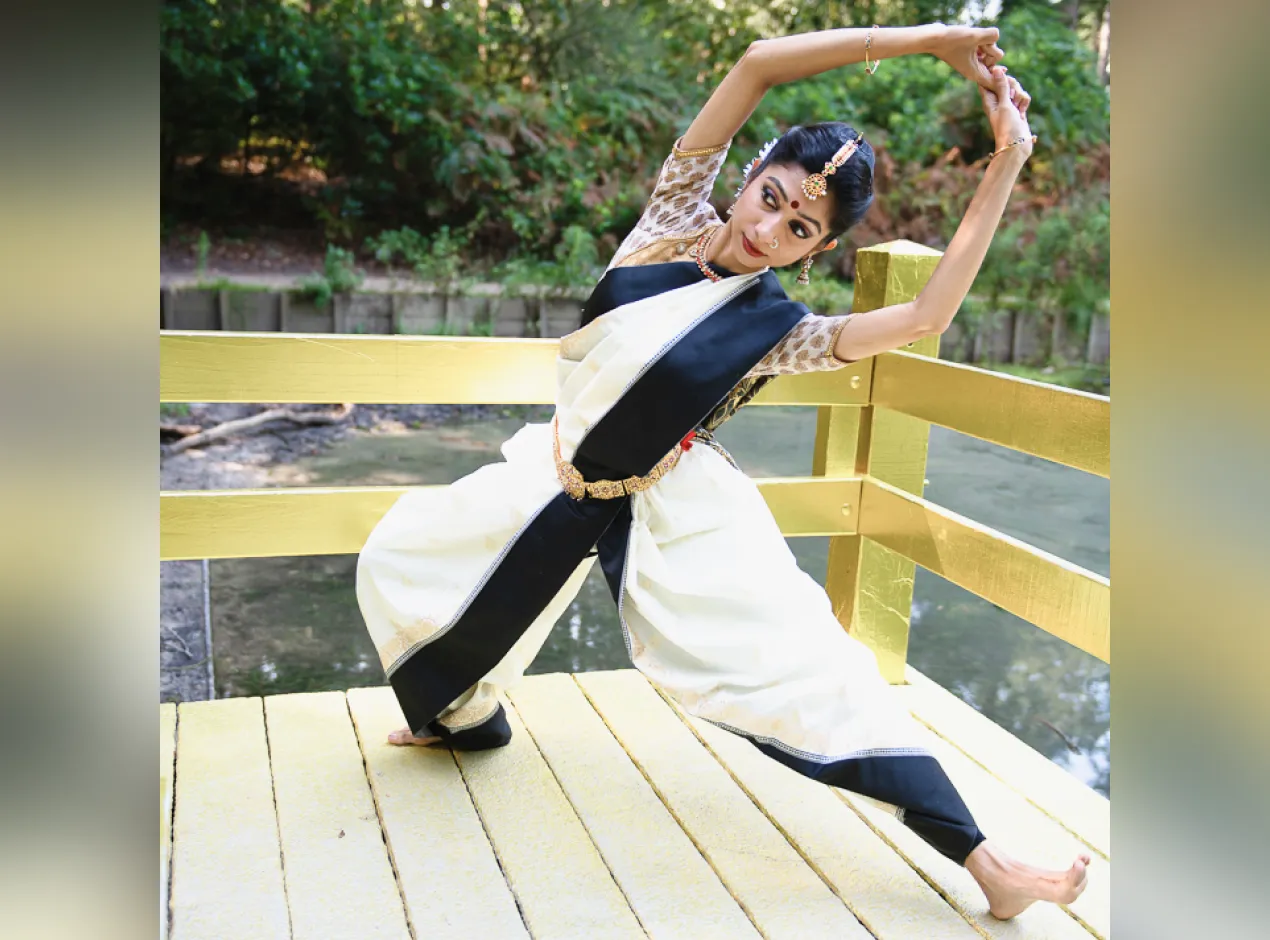
Prenkhana is one of the most popular and basic ‘Pada Bhedas’ or leg postures. Along with the hand movements, the posture is called the Mandala Bheda.
To get to the stance, one needs to tap the right leg. Now, when one leg is grounded flat and the other leg is on its heels the posture is called the Prenkhana. The right hand is placed at a 45-degree angle, above shoulder level in Katakamukha hasta.
5. Eka Pada
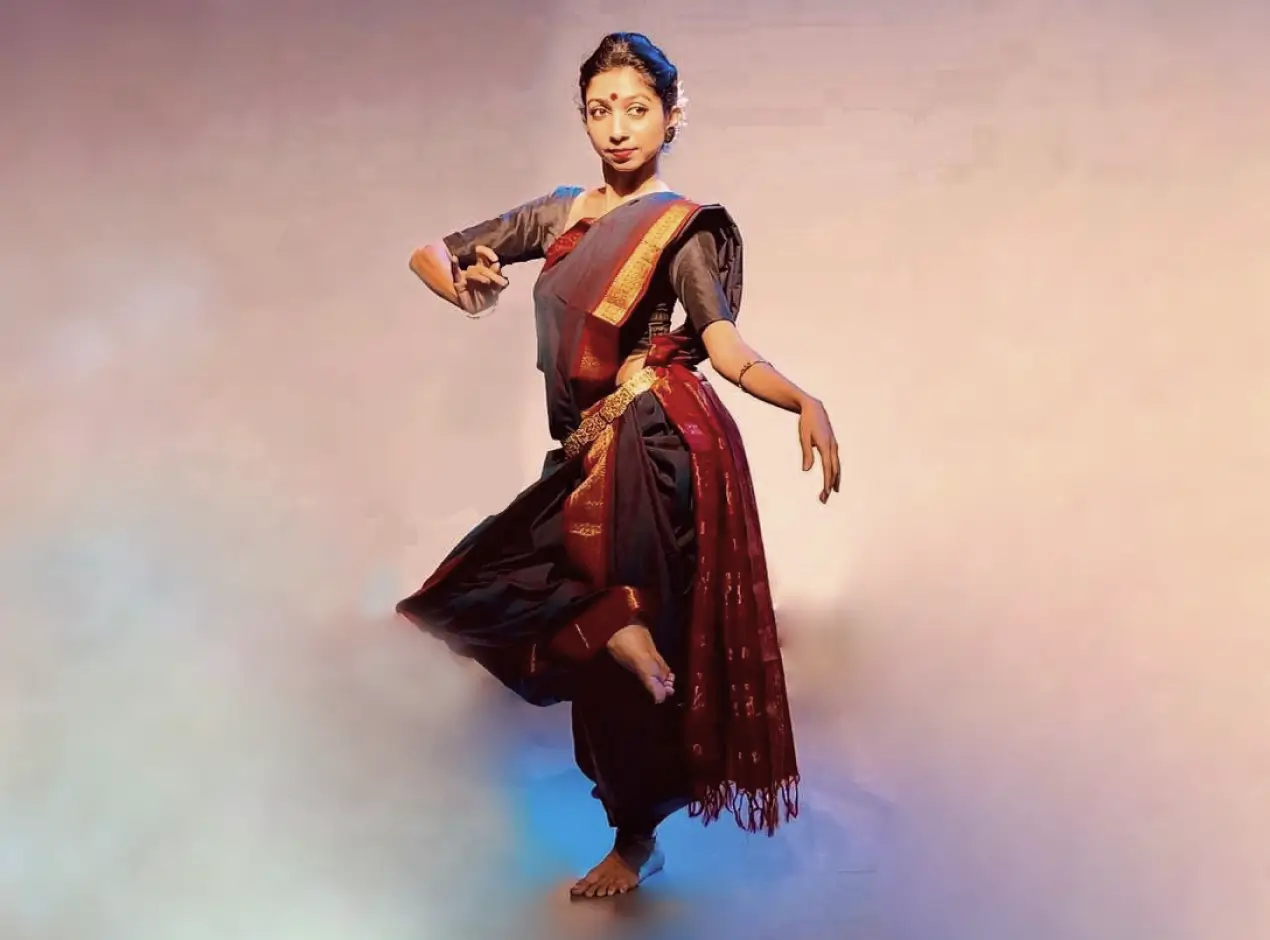 When Eka Pada is performed in the static position, then the posture is Sthana, and when the Eka pada is executed taking a turn, then the posture is Bhramari. While executing Eka Pada, one needs to stand on one foot, with the leg stretched straight, and place the other leg across the knee of the standing leg. The knee of the crossed leg is flexed and open so that the knee points sideways.
When Eka Pada is performed in the static position, then the posture is Sthana, and when the Eka pada is executed taking a turn, then the posture is Bhramari. While executing Eka Pada, one needs to stand on one foot, with the leg stretched straight, and place the other leg across the knee of the standing leg. The knee of the crossed leg is flexed and open so that the knee points sideways.
On a Concluding Note!
Qualities that need to be developed by a Bharatanatyam performer for flawless execution of the above-mentioned postures or any other Bharatanatyam posture as mentioned in the Abhinaya Darpana are:
Javaha Sthiratwam Rekha cha
Bhramari Drishti Shramaha
Medha Shraddha Vacho Geetham
Paathra praanaa Dasha Smruthaha
Which translates to…
Javaha means agility and nimbleness required to execute a posture.
Sthirathwam is the ability to balance and maintain the center of gravity throughout the execution of the posture.
Rekha is the ability to maintain symmetry in the arrangement of the limbs. This gives a sharp and graceful visual appeal to any posture.
Brahmari or the ability to perform spins or turns while maintaining balance.
Drishti or through eye movements, the performer adds emotions to any posture and makes a connection with their audience
Shramaha or the perseverance to remain dedicated towards the ancient art form of Bharatanatyam.
Medha or the intelligence and curiosity to attain perfection in all the technical and aesthetical aspects of Bharatanatyam.
Shradha or the dedication to pursue the art form.
These qualities are not only limited to Bharatanatyam, in fact, but these also hold significance for every learner who is pursuing any of the Indian Classical Dance forms. If you are curious to experience the graceful journey of any of the dance forms or even choose an Indian classical dance genre that suits your persona and taste, you can explore a range of Bharatanatyam classes and a pool of highly trained and acclaimed native teachers.



